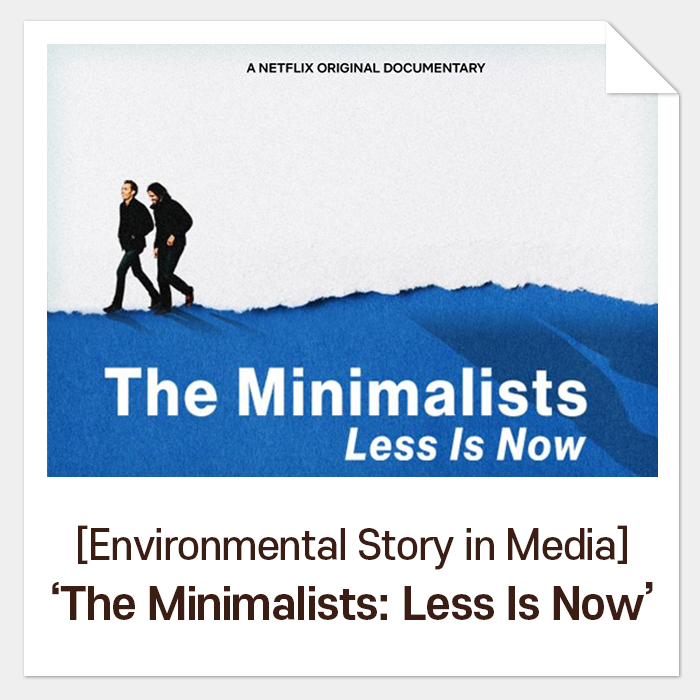Plastic Out! The Ministry of Environment’s Plastic-free Measures!
At the 120th meeting
of government current affairs, the Ministry of Environment announced
plastic-free measures to solve the increasing plastic municipal waste and the
marine pollution issues. Let’s find
out more details!
Critical increase of
plastic waste
The outbreak of COVID19 pandemic has changed our lifestyle since last year. Telecommuting, online lessons, and the ban on gatherings brought high demands on food and parcel delivery and this naturally caused a sharp increase of household waste. The production rate of plastic waste in the first half of 2020 is 8.48 million tons which is 15.6% higher than last year. On the other hand, the recycling rate has continuously decreased from 57.9% in 2015 to 40.6% in 2019.
The Direction of Measures
for Plastic Waste
The announcement of the Ministry of Environment contains much more detailed and practical regulations and policies for the plastic issue. In short, they aim to reduce the plastic production and to increase the recycling rate of used plastic through a resource circulation program.
In order to draw practical effects with the measures for plastic-free Korea, the government is planning to provide education at public schools and community service centers and establish a union in cooperation with local governments, industries, and social communities.
The Ministry of Environment
also started a challenge campaign called ‘GoGo
Relay’ to promise an action to reduce plastic use in
everyday life. Started from the Minister of Environment on January 4th, many
figures have been joining the campaign encouraging people’s participation and practice.
Companies, Answering the
Question for Sustainable Society
Most of the top 10
companies in Korea announced New Year’s
message focusing on ESG management (Environment, Social, Governance) in 2021.
The ESG management also has been a major factor when making a decision for a
company and investor. People became awakened before the overflowing waste and
they have pressured companies asking for changes. The food industry has now
tried various attempts to work with more environment-friendly and sustainable
packaging. Let’s take a few examples here.
1. Develop an
environmentally friendly material
Pulmuone is now using Bio PET for a salad bowl. They expect to reduce carbon footprint by 20% in the entire process of production, distribution, and incineration using sugarcane-abstracted material.
2. Switch to paper
packaging
Dongwon Home Food replaced a Styrofoam box with a paper box for fresh food delivery. Fresheasy, one of Meal Kit companies said they change the inner plastic packaging to paper so that they could be biodegraded when discarding.
3. Reduction of plastic
use.
CJ CheilJedang reduced the
plastic use by 40% by decreasing the thickness of the containers of instant
rice, one of their main products. Pulmuone Sammul also attempted lightweight PET
for drinking water while Dongwon F&B removed an inner plastic container
packaging for seasoned seaweed. Companies are investing to introduce a new
system and facilities for such transition.
The Government’s Policy and Everyone’s Effort
to Make it Work!
The Ministry of Environment’s Plastic-free Measures also include a policy to reduce greenhouse gas emission from plastic, switch oil-derived plastic to 100% bioplastic in cooperation with relevant industries and to support the development of bioplastic technology. In case of the bioplastic, it should be thoroughly studied about its biodegradability with clear data. Furthermore, we should consider how to sort them separately from other plastics with the current recycling system in Korea. As it may disrupt the entire recycling, we need to take a careful approach.
In addition, it wouldn’t be a fundamental solution for plastic waste to introduce and apply a new alternative unless its improvement on the environmental issue is clearly proven. There should be a specific guideline for hazardous materials and a thorough management for the product’s lifecycle to flow in the circulation.
In other words, there are two things that need to be checked to make a genuinely sustainable society. First, we need to check if alternatives are really capable of material recycling and organic recycling. We need to make sure that a product suggested as an eco-friendly alternative is not another disguised plastic. Second, it should be checked if the alternative could be applied in a current resource circulation system. It is to confirm the new alternative is suitable to apply for the entire process from production, consumption, collection, and re-production.
In order to increase the
reliability and effectiveness of the Government’s
policy, it is necessary to encourage people’s interest
and participation in the environment with public institutions and industries’ efforts and make the resource circulation work properly. We should
no more let greenwashing confuse the consumers and destroy the environment.








Comments
Post a Comment